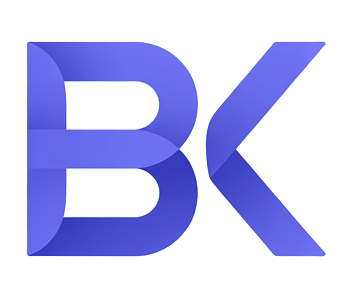Investments in Québec –
TFSA, RRSP, RESP, FHSA, RDSP & Advanced Strategies
Government
Investment Programs
TFSA (Tax-Free Savings Account)
- 2025 limit: $7,000. Unused room carries forward.
- Tax-free growth and withdrawals.
- Can hold cash, GICs, mutual funds, ETFs, self-directed portfolios (via licensed providers).
FHSA (First Home Savings Account)
- $8,000/year, lifetime $40,000.
- Contributions are deductible. Qualified home-purchase withdrawals are tax-free.
- Can be combined with Home Buyers’ Plan (HBP) for a stronger down payment strategy.
RRSP (Registered Retirement Savings Plan)
Canada’s and Quebec’s most popular retirement program.
An RRSP often also referred to as a registered retirement plan allows contributions that are tax-deductible.
- Contributions reduce taxable income; growth is tax-deferred. By December 31 of the year you turn 71, convert to RRIF (Registered Retirement Income Fund) or an annuity, ensuring structured retirement income. Home Buyers’ Plan (HBP) limit currently $60,000; repay over up to 15 years.
RESP (Registered Education Savings Plan)
- CESG: up to $7,200 per child (federal).
- CLB (Canada Learning Bond): up to $2,000 for eligible families (federal).
- QESI (Québec): refundable provincial incentive for Quebec residents; lifetime maximum $3,600 per eligible beneficiary paid into the RESP (subject to eligibility and annual limits).
- RESP growth is tax-deferred ; taxed to the student upon withdrawal for education.
RDSP (Registered Disability Savings Plan)
- Government provides matching grants up to $3,500/year (lifetime $70,000) and
- Bonds up to $1,000/year (lifetime $20,000) based on income.
- Long-term savings to support financial security.
- Growth is tax-deferred, and withdrawals are structured to maximize support without reducing other benefits.
Private & Advanced
Investment Solutions
Investment Loans
Boost your portfolio by using borrowed funds to invest in non-registered accounts.
- Can accelerate contributions and after-tax growth.
- Magnifies gains and losses; cash-flow stress-testing is required.
- Interest may be tax-deductible when the borrowing is used to earn income in a taxable (non-registered) account; case-by-case and subject to tax rules.


Insurance Lending Solutions (IFA / CSV Loans)
This approach, sometimes called an Immediate Financing Arrangement (IFA), provides tax-efficient financing for investments, business expansion, or real estate while preserving the policy’s long-term protection.
- Borrow against the cash value of a permanent life policy.
- Potential tax efficiencies and liquidity without selling assets.
- Requires alignment with the insurer, lender, and your tax advisor.
- Risks, costs, covenants apply; we model all scenarios first.
Flow-Through Shares (by referral)
Unique to Canada, flow-through shares let companies “flow” their exploration expenses to investors, creating deductions that reduce taxable income. Popular in the mining, energy, and clean-tech sectors, these opportunities can deliver significant tax benefits.
- Exploration expenses “flow” to investors as deductions.
- Higher risk and lower liquidity; suitable for advanced, tax-driven cases.
- Accessed through specialized providers; I coordinate with the tax expert.


Manulife Access Credit Lines
Available for TFSA and existing personal non-registered accounts (per Manulife eligibility and limits). Note: interest tied to TFSA use is generally not tax-deductible; availability, collateral, and product rules apply.
- Access Margin (Marge Accès) — up to 50%
- Access Plus — up to 75%
Market Investments
(How I Help)
Securities and fund purchases are executed by licensed dealers.
I design the plan, set asset allocation, and coordinate execution and reviews.
ETFs & Dividend Equities
Bonds
Mutual/Segregated Funds
Retirement & Pension
Calculators
Plan your financial future with advanced online tools that help you estimate retirement savings. These calculators show how much you need to save, how long your money may last, and what income to expect in retirement.
- Estimate contributions, withdrawals, and longevity scenarios.
- Model TFSA/RRSP/RRIF timelines and cash-flows.
- Results are estimates; final decisions follow full planning.

Portfolio Review
& Tax Alignment

A comprehensive investment review ensures your portfolio is properly diversified, tax-efficient, and aligned with both family and business objectives. By coordinating registered accounts such as TFSA, RRSP, RESP, RDSP, and non-registered accounts, we create a plan that reduces tax liabilities and maximizes after-tax returns. Integrating tax strategies means every dollar works harder for you and your long-term security.
- Asset location: registered vs. non-registered placement.
- Minimize tax on interest/dividends/capital gains.
- Coordinate with your accountant for efficient reporting.
Why Work With Me
Professional experience
Personalized approach
Clear communication
Fast and reliable service
Trusted relationships
Strong network
Who I Help
Families & Parents
Home Buyers
Professionals & Business Owners
Retirees
How It Works
(Step by Step)
1. Initial
Consultation
2. Investment
Strategy
3. Tax
Integration
4. Implementation
5. Annual Review
Frequently Asked Questions
(FAQ)
What is the difference between TFSA and RRSP?
How much can I contribute to TFSA in 2025?
What are TFSA benefits?
What are RRSP deadlines and withholding tax rules?
What does withdrawing from RRSP mean?
How does RRSP withholding work?
Financial institutions withhold 10% / 20% / 30% federally based on withdrawal size.
In Québec, additional provincial withholding applies. Your final tax is set in your return.
Can I combine FHSA with the RRSP Home Buyers’ Plan?
When does an RRSP become a RRIF?
Can I deduct RRSP contributions?
Are investment loans safe?
What about insurance-lending (IFA/CSV loans)?
Who executes ETF/stock/mutual fund transactions?

Compliance & Scope
Services are designed for Quebec residents.
I provide independent planning and coordination.
Securities/investment transactions are executed by licensed dealers; insurance by licensed insurers.
Tax outcomes depend on your situation; consider independent legal/tax advice.
